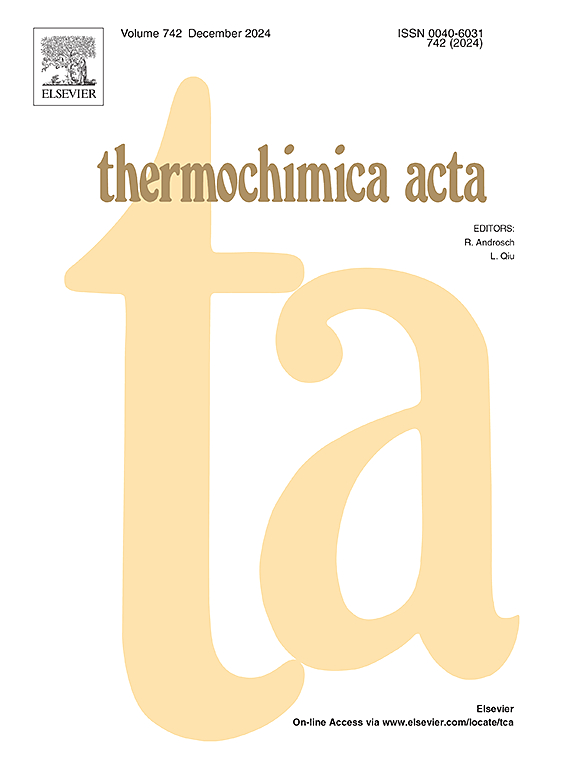Synergistic flame retardant mechanism of MoO₃ and intumescent flame retardants: Insights from real-time char layer resistance monitoring
IF 3.1
2区 化学
Q2 CHEMISTRY, ANALYTICAL
引用次数: 0
Abstract
This study explores the synergistic flame retardant mechanism of molybdenum trioxide (MoO₃) and intumescent flame retardants (IFRs) in a styrene-butadiene-styrene (SBS) matrix using real-time resistance monitoring. By tracking the char layer resistance during combustion and combining multiple characterization techniques, we examined MoO₃’s impact on the char layer morphology. The results demonstrate that the incorporation of MoO₃ enhances the flame-retardant performance of IFR. At 1 wt % MoO₃, the UL-94 rating improves from non-classified to V-1. Thermogravime tric Analysis reveals that MoO₃ lowers the initial decomposition temperature of the material from 240 °C to 231 °C while increasing the char residue. X-ray Photoelectron Spectroscopy and Fourier transform infrared analyses confirm that MoO₃ acts as a catalyst, promoting ammonium polyphosphate decomposition and facilitating the formation of phosphate esters, which enhance the char layer's viscosity and compactness. While MoO₃ does not directly participate in char crosslinking, it accelerates char formation, improves expansion, and strengthens flame retardancy. Real-time resistance data further indicate that MoO₃ reduces char formation time and slows char layer cracking, thereby enhancing flame resistance. This study provides new insights into the MoO₃/IFR synergy and introduces a novel approach for monitoring char layer changes during combustion.
MoO₃与膨胀型阻燃剂的协同阻燃机理:来自炭层电阻实时监测的见解
通过实时电阻监测,探讨了三氧化钼(MoO₃)和膨胀型阻燃剂(IFRs)在苯乙烯-丁二烯-苯乙烯(SBS)基体中的协同阻燃机理。通过跟踪燃烧过程中炭层阻力,结合多种表征技术,研究了MoO₃对炭层形貌的影响。结果表明,MoO₃的加入提高了IFR的阻燃性能。在1 wt %的MoO₃下,UL-94等级从非分类提高到V-1。热重分析表明,MoO₃降低了材料的初始分解温度,从240℃降低到231℃,同时增加了炭渣。x射线光电子能谱和傅里叶变换红外分析证实,MoO₃起到了催化剂的作用,促进了聚磷酸铵的分解,促进了磷酸酯的形成,提高了炭层的粘度和致密性。虽然MoO₃不直接参与炭交联,但它可以加速炭的形成,改善膨胀,增强阻燃性。实时阻力数据进一步表明,MoO₃减少了炭的形成时间,减缓了炭层的开裂,从而提高了阻燃性。这项研究为MoO₃/IFR协同作用提供了新的见解,并引入了一种监测燃烧过程中炭层变化的新方法。
本文章由计算机程序翻译,如有差异,请以英文原文为准。
求助全文
约1分钟内获得全文
求助全文
来源期刊

Thermochimica Acta
化学-分析化学
CiteScore
6.50
自引率
8.60%
发文量
210
审稿时长
40 days
期刊介绍:
Thermochimica Acta publishes original research contributions covering all aspects of thermoanalytical and calorimetric methods and their application to experimental chemistry, physics, biology and engineering. The journal aims to span the whole range from fundamental research to practical application.
The journal focuses on the research that advances physical and analytical science of thermal phenomena. Therefore, the manuscripts are expected to provide important insights into the thermal phenomena studied or to propose significant improvements of analytical or computational techniques employed in thermal studies. Manuscripts that report the results of routine thermal measurements are not suitable for publication in Thermochimica Acta.
The journal particularly welcomes papers from newly emerging areas as well as from the traditional strength areas:
- New and improved instrumentation and methods
- Thermal properties and behavior of materials
- Kinetics of thermally stimulated processes
 求助内容:
求助内容: 应助结果提醒方式:
应助结果提醒方式:


